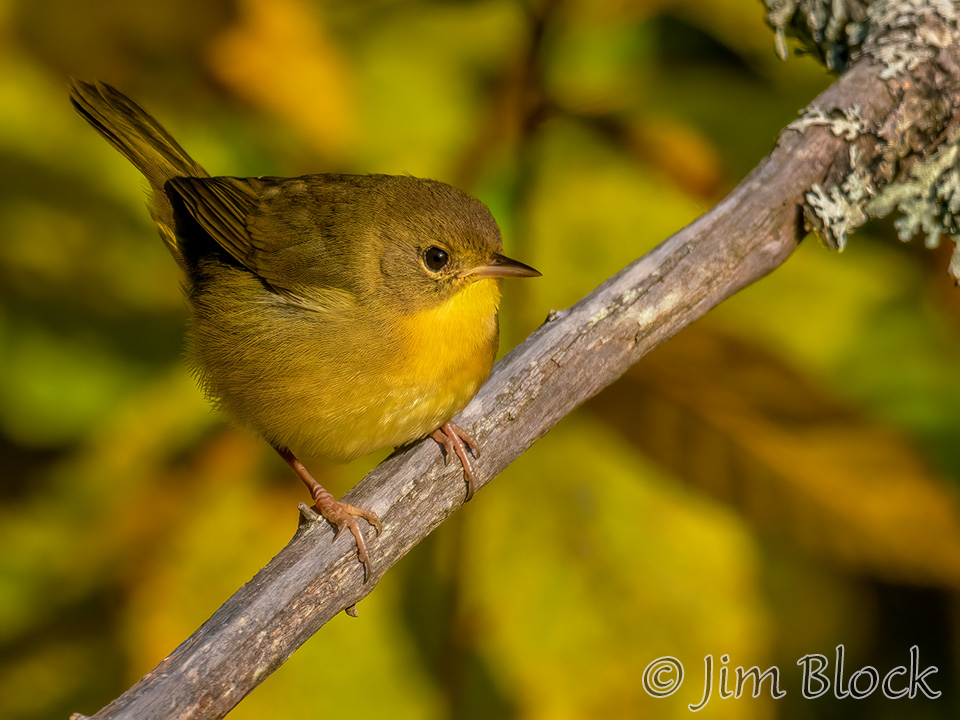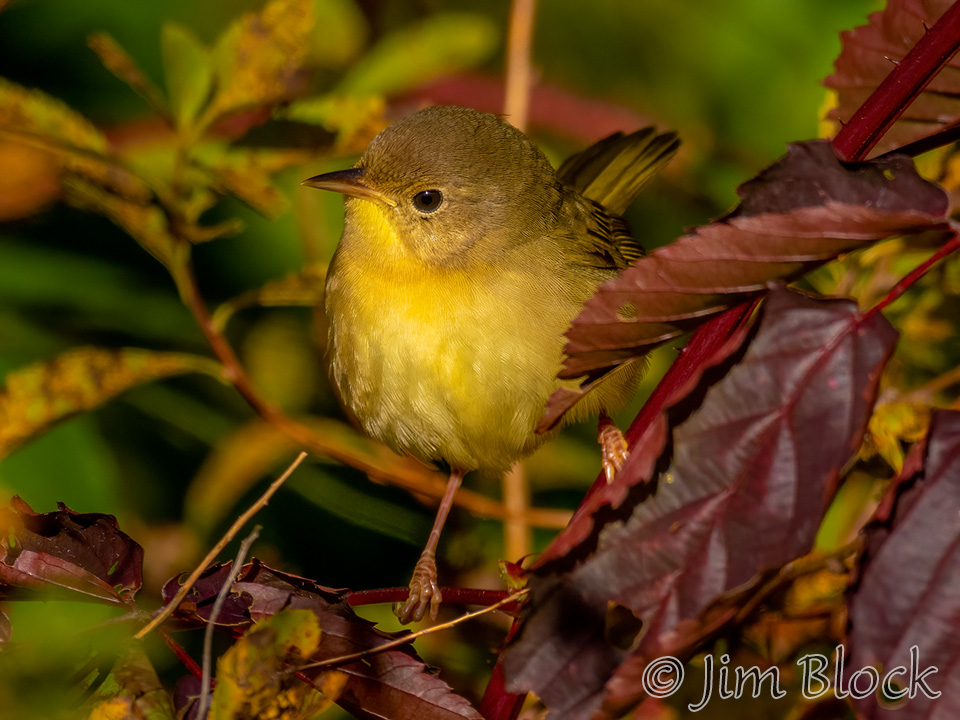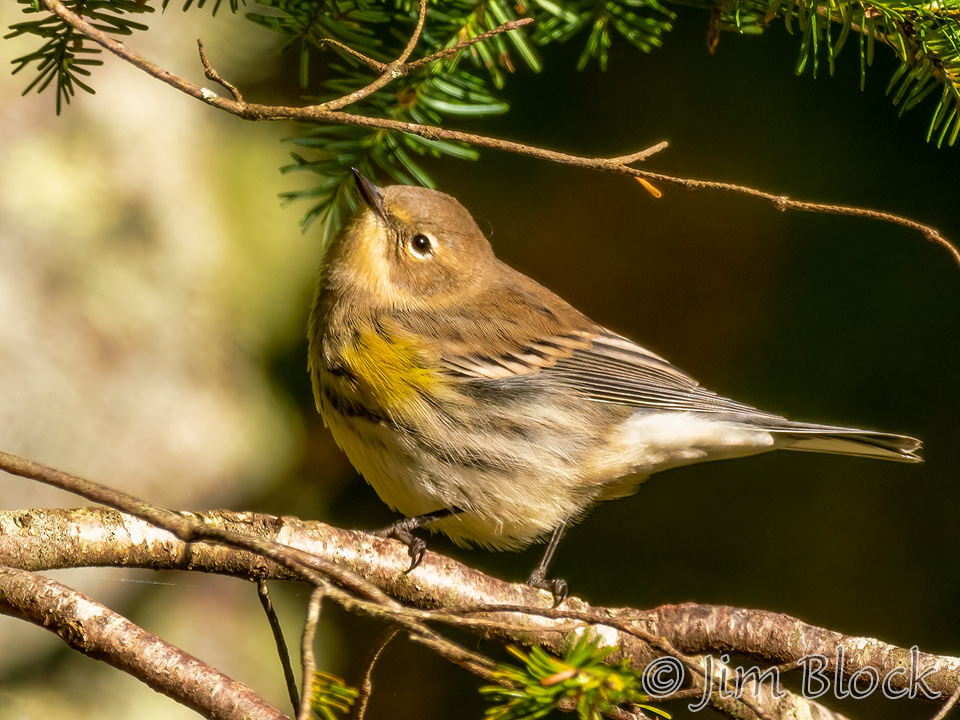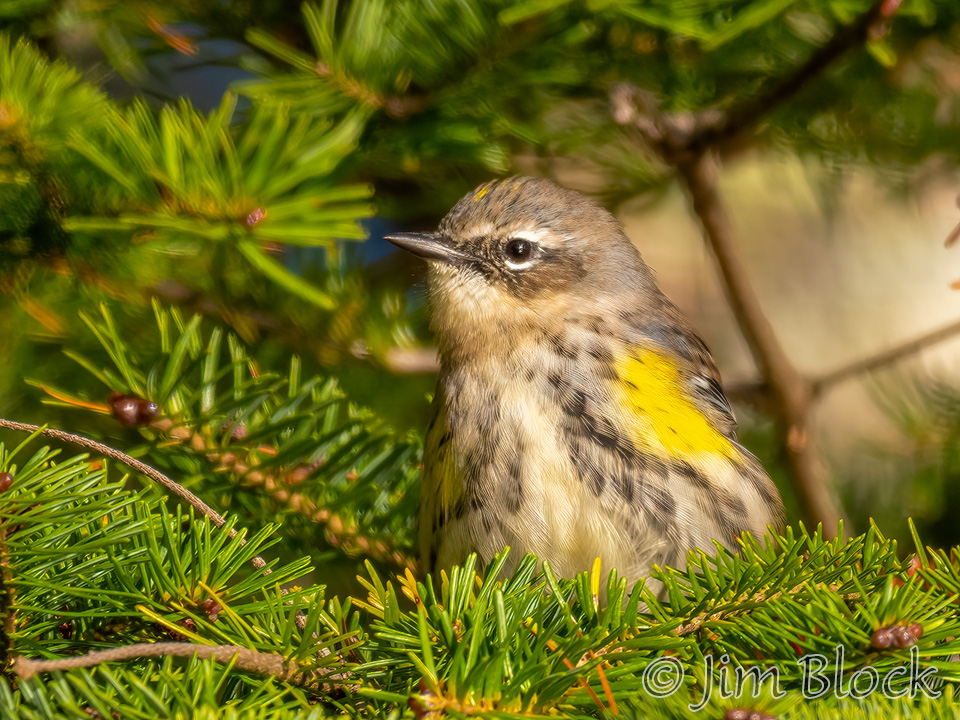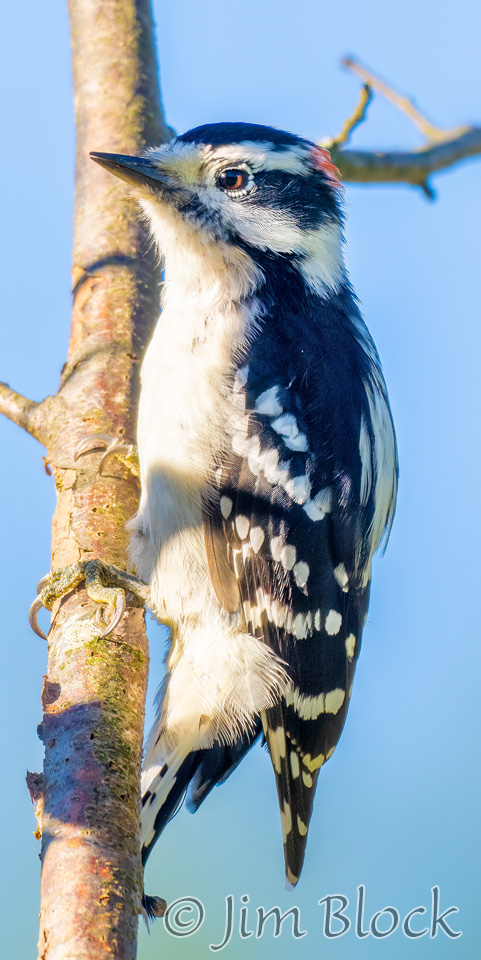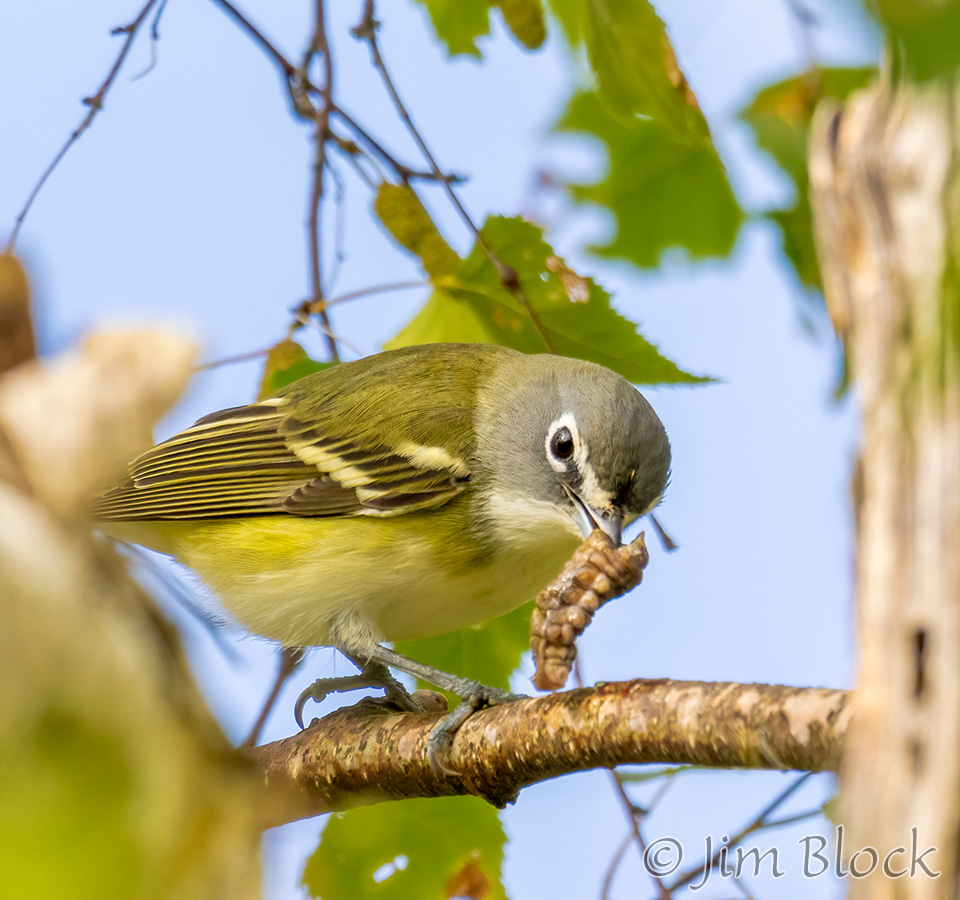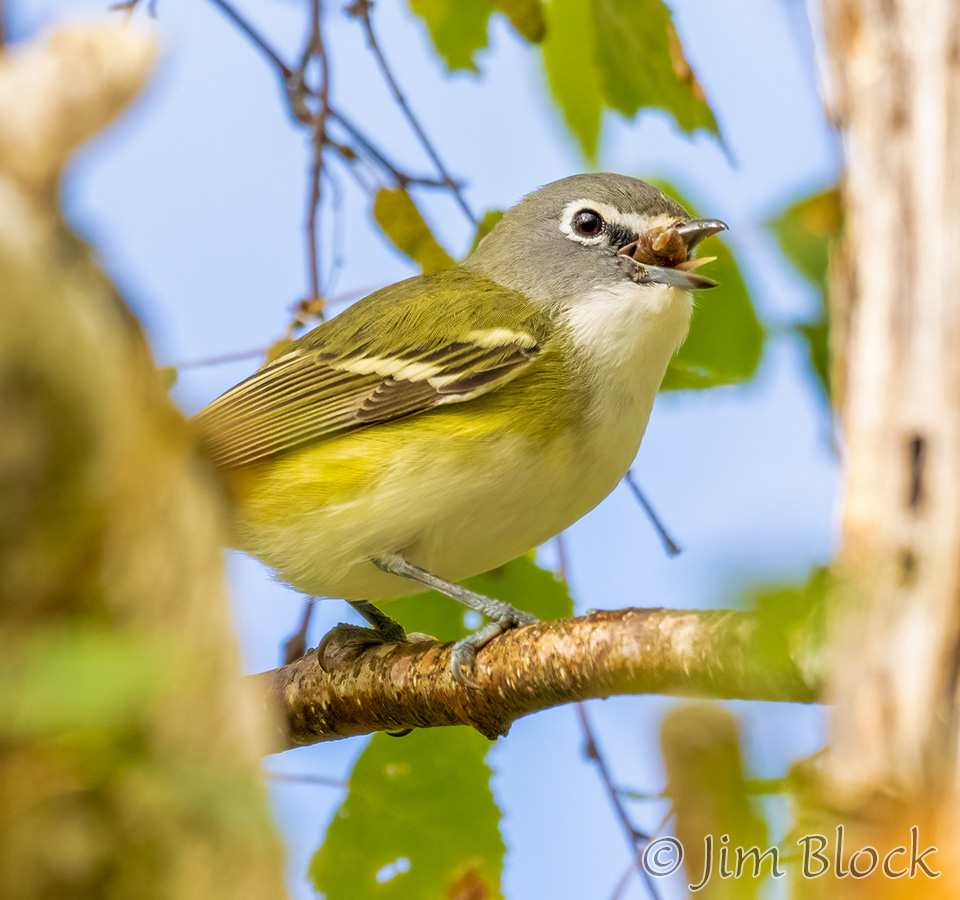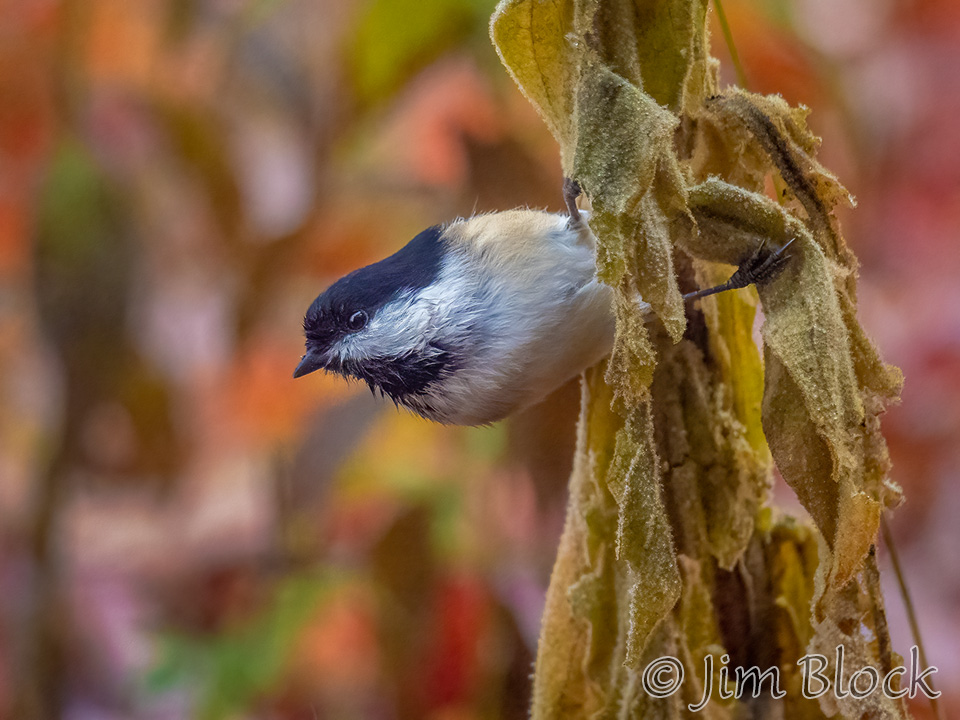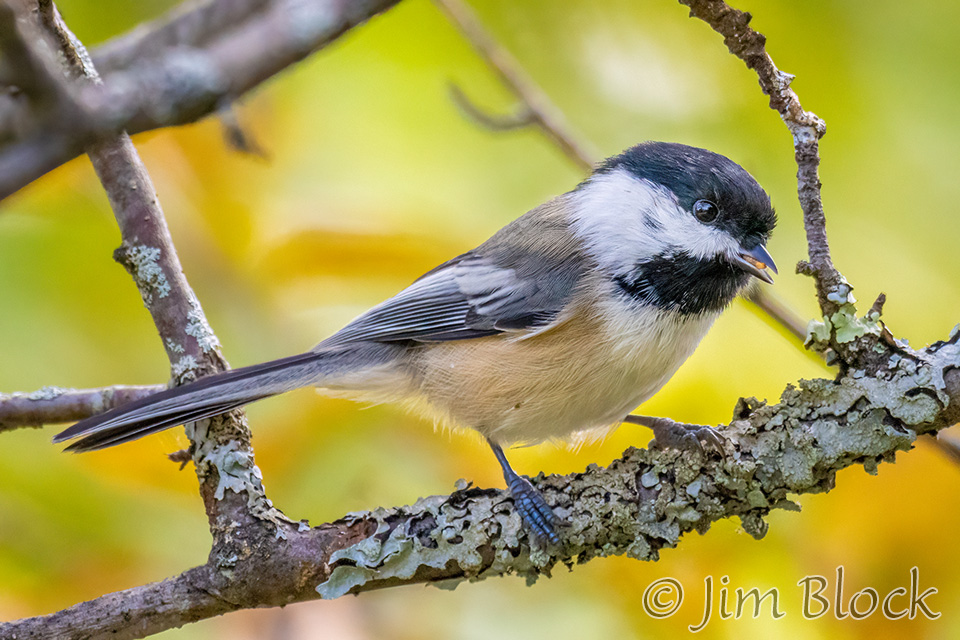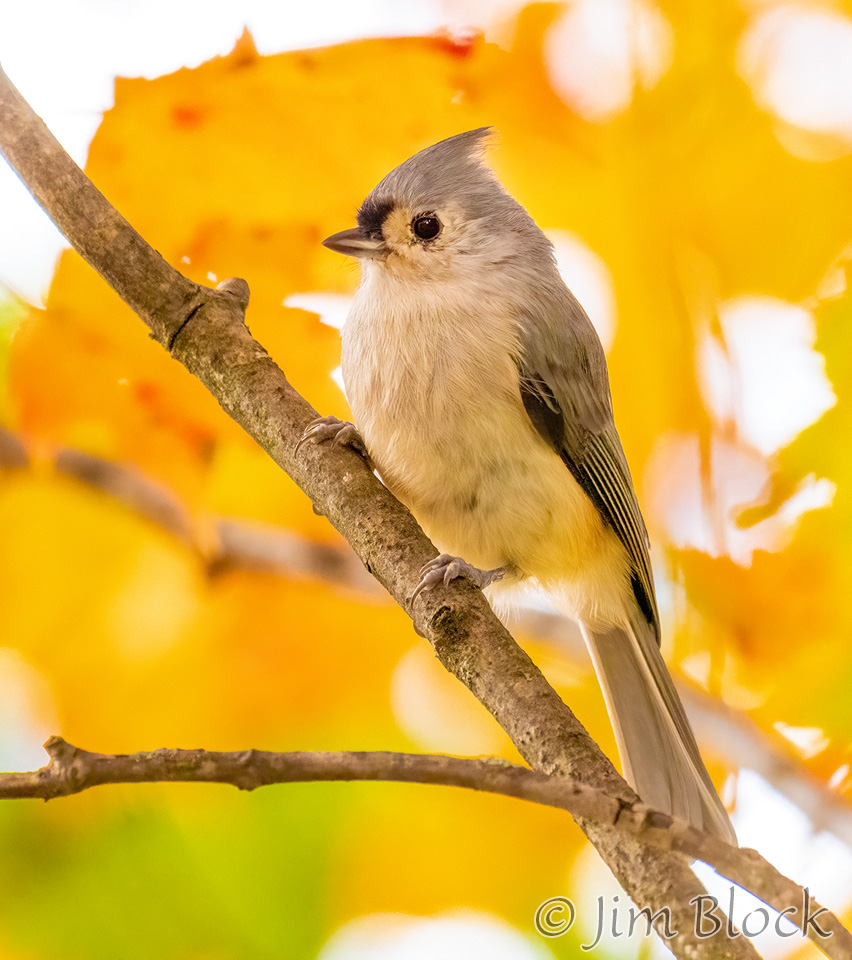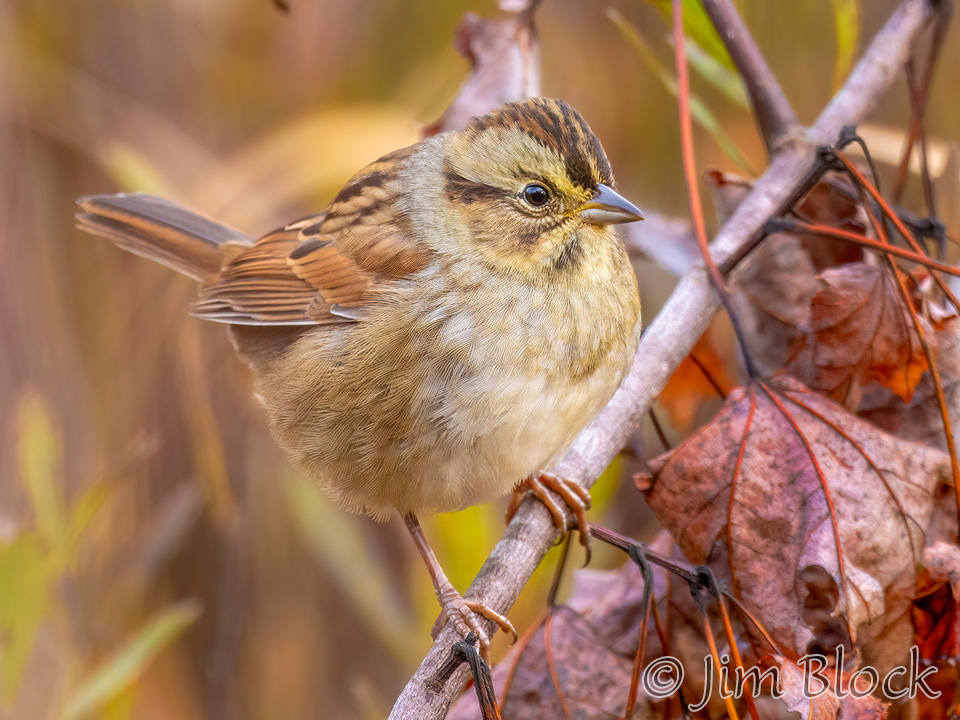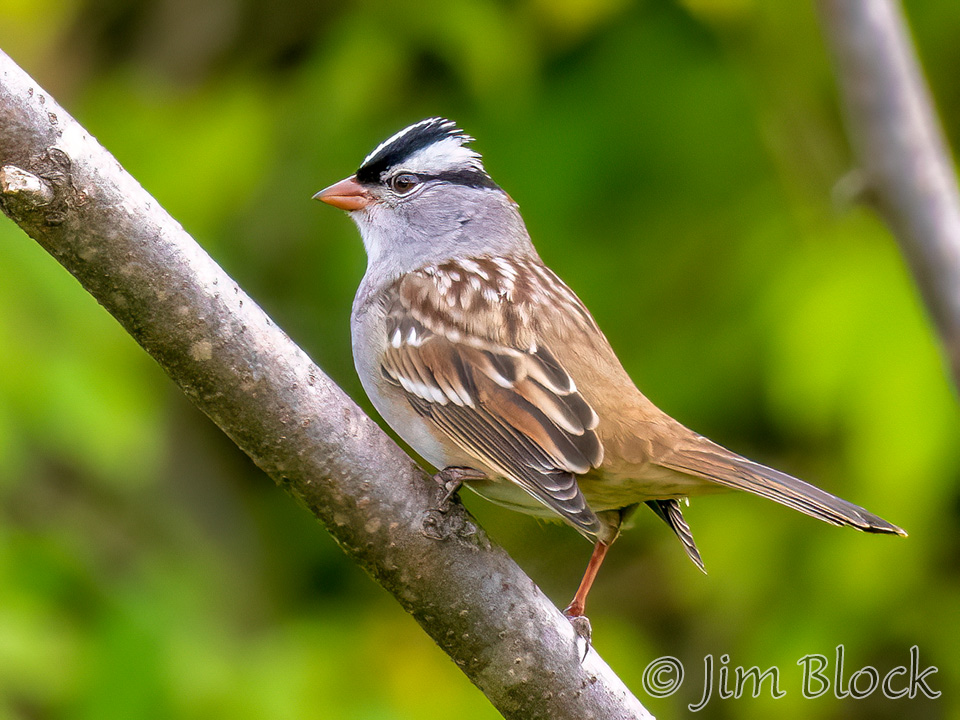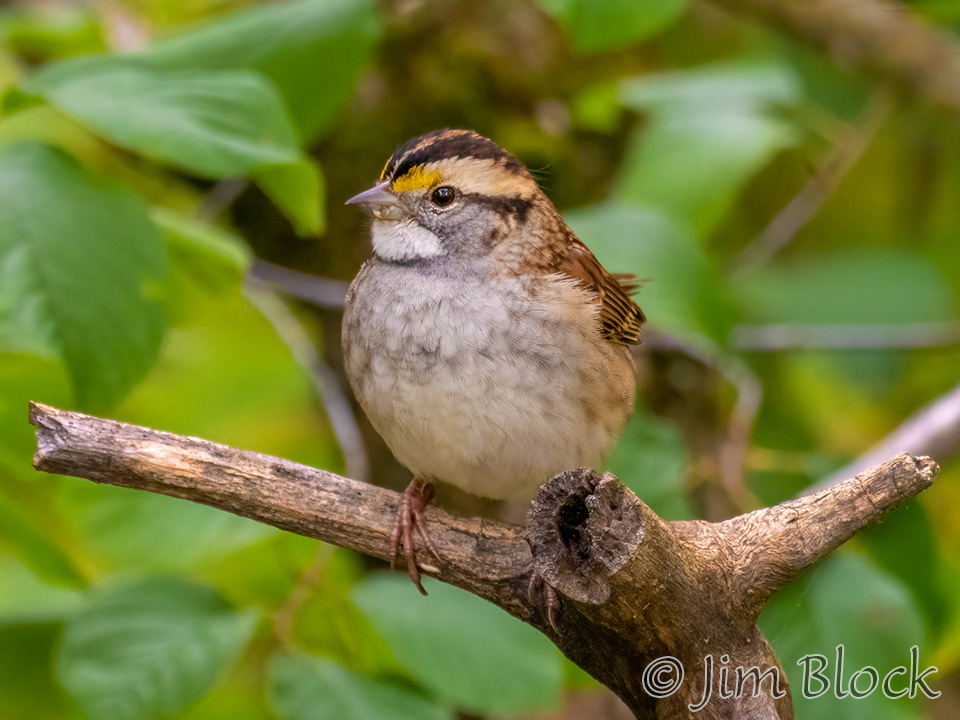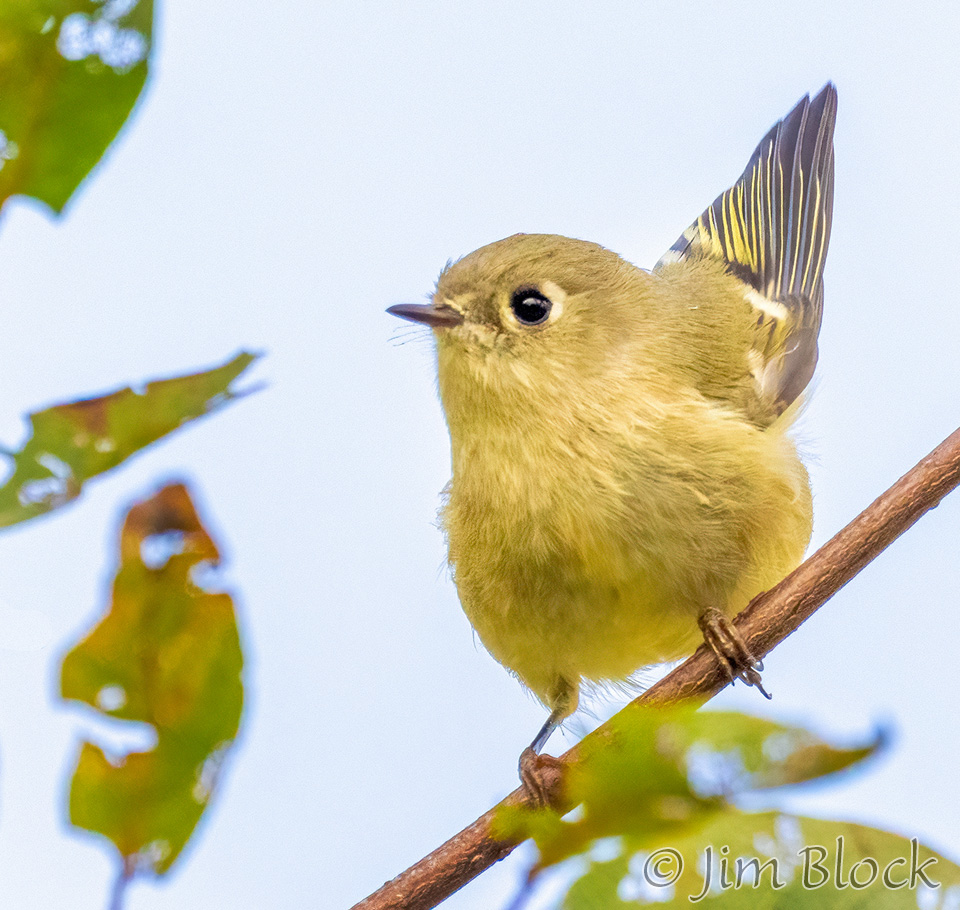
The early weeks of Autumn normally contain an interesting mix of birds. There are the summer residents that have yet to depart; their “first winter” offspring, often with plumage that makes them hard to identify; species migrating though the area, typically from farther north; and all-year-round residents, often searching madly for food to cache for the upcoming winter. I believe the Yellow-rumped Warbler above is a first winter bird. I found it in Lyme.
Here I present photos I took during the first two dozen days of Autumn 2022.
Warblers
On the first day of Fall, I found a Black-throated Green Warbler in Norwich at Campbell Flat.

Male Common Yellowthroats retain their black masks all year round. Here is one developing a mask. It is a first-year male found on Moose Mountain in Etna.

Here are four more photos of Common Yellowthroats I took near Mill Pond on Moose Mountain.
The most common warbler species seems to be the Yellow-rumped Warbler and this certainly seems to be the case in fall. They can easily outnumber chickadees. Here are some I photographed in Enfield, Etna, and Lebanon.
At the Lower Shaker WMA in Enfield I found a cute Black-and-White Warbler working the trees at the edge of the meadow.


In the same area I saw a number of Palm Warblers. They were almost certainly migrating through the Upper Valley. They normally nest farther north. Here are three eastern Yellow Palm Warblers.



I also found Palm Warblers on Moose Mountain. Here are two photos from near Mill Pond.


Wrens
I think wrens are very cute birds. The House Wren has a chattering song. The Winter Wren’s song goes on forever and is truly a piece of music. It is wild, beautiful, and a joy to hear.
Here is a House Wren at Kilowatt South Park in Wilder.


I found a Winter Wren at a fairly productive spot this fall, Moose Mountain in Etna. At times I have circled a tree for ten or more minutes, hearing it singing but not seeing it. But this time it was easy, although it did not hang around. Here is this charming bird. The raised tail is very characteristic.



Woodpeckers
There is only one flicker species common in New England, the Northern Flicker. I photographed the bird below at KW South Park in Wilder.

One characteristic that separates Hairy Woodpeckers from Downy Woodpeckers is the length of its bill. Hairy Woodpeckers have longer bills, about as long as its head, as with the bird below in our Etna yard.

Below are five Downy Woodpecker photos of three different birds taken in Norwich and Etna.
Vireos
The Red-eyed Vireo is likely this area’s most common neotropical migrant. They are much more often heard than seen. All summer long they sing a very monotonous song, what Ted Levin called “forest elevator music”. Here are two photos from Moose Mountain in Etna.


Those two photos were taken during a bird-filled morning at Mill Pond with Larry. At times this can be a great spot, high up on Moose Mountain. That same morning I took these two photos of a beautiful Blue-headed Vireo.


I returned to Mill Pond the next three days. For two days I found almost no birds. But I hit a bonanza again the third day. Here are three more photos of Blue-headed Vireos from that third morning.



I think the Blue-headed Vireo is a beautiful bird. I was overjoyed when I arrived home the next day to find one in our yard. I saw movement in a tree, stopped, and parked in our driveway well short of our garage. I was able to get these two photo of the vireo in a white birch tree.


The vireo then disappeared into the center of the tree. I moved around and managed to find a peek hole between trunks, branches, and moving leaves. The vireo did not move from its perch for a long minute. I soon realized why.
The Blue-headed Vireo was holding a large caterpillar in its claws against the branch it was standing on. Once it had eaten much of the insides of the caterpillar, it pulled it free and swallowed the shell. Here is a long sequence of the action. You can pause any of these slide shows and click through them at your own pace, if you wish.
Titmice and Chickadees
Titmice and Chickadees are in the same Paridae family. They are common winter birds in our yard, although they are year-round-residents. They do migrate short distances, so the summer birds might not be the same as the winter birds.
Here are five photos of Black-capped Chickadees with fall foliage in the background.
And, also from our yard, three photos of Tufted Titmice.
Sparrows
Perhaps sparrows get a bum rap, but some are very beautiful. The Song Sparrow is certainly the most common. It has a nice song to make up for what it lacks in the beauty department. Here is one from Etna.

And a Song Sparrow from Norwich.

A somewhat plain bird that summers in the mountains but returns to the lower areas in the fall is the Dark-eyed Junco, also in the same family of our more common sparrows. An easy way to identify these birds is to look for flashing white in the tail when it flies. Here are a half dozen photos from Lebanon and Etna.
Below is a Chipping Sparrow photographed in Wilder.

Moving on to what I consider are four beautiful sparrows, we start with the Lincoln’s Sparrow. It somewhat resembles the Song Sparrow, but its coloring and softness set it apart for me. These photos were taken in Norwich and Etna.
The Swamp Sparrow is also quite striking. Here are three from Bradford, NH and Norwich, VT.
The White-crowned Sparrow is plentiful in May and October but somewhat rare other months. It is a very striking bird. Here are a half dozen photos from Etna and Wilder.
A beautiful sparrow is the White-throated Sparrow. Here is a sequence of one preening at the Lower Shaker WMA in Enfield.
Below are more photos of White-throated Sparrows taken in Norwich and Lebanon.
Hawks
Only one this time. Many of the Broad-wings have headed south. This one was a Red-tailed Hawk, a year-round resident I found in Enfield.

Thrush
Also, only one thrush. But a nice one. A Hermit Thrush on Moose Mountain in Etna.

Mimids
This family includes three species often found at Kilowatt South Park in Wilder. I have photographed them all on the same day, but these weeks only two were around. I could not find Brown Thrashers.
Here is a Gray Catbird. I like the rufous undertail coverts.

I was able to closely approach a Northern Mockingbird as it preened. Here are two photos.


Kinglets
The two kinglet species can be seen in this area. The beautiful Golden-crowned Kinglet is a year-round-resident, but unfortunately I did not photograph one this fall. I did find some Ruby-crowned Kinglets in Etna, in our yard and on Moose Mountain, as they migrated through our area.
Nuthatches
Mill Pond in Etna again provided me with a species I did not photograph elsewhere these four weeks, a Red-breasted Nuthatch. I still remember sending my first Red-breasted Nuthatch photo (digitized from slide film) to Peg in Lyme and asking her about the strange-looking chickadee I photographed.

I photographed White-breasted Nuthatches in Lebanon and Etna.
Great Blue Herons
Great Blue Herons were still plentiful these weeks. I saw one several times in the early morning fog and semi-darkness near the boat launch at the end of the Shaker Bridge in Enfield. Perhaps it hangs around there because fish or bait get discarded as boats leave the lake. Here are three photos from that spot. The first also shows five Common Merganser.



On a small pond in Etna, I was able to photograph a GBH through light fog in the early morning. I saw it catch and swallow a small fish.
A Great Blue Heron flew as I stopped at small wetland in Bradford, NH. As is often the case, I did not see it until it was in the air. I hopped out of my car and managed to get a few quick shots before it disappeared over the trees. I had stopped because I was attracted by the foliage in the wetland. I will show it in a few weeks when I publish a Fall Foliage 2022 blog.


Killdeer
I found a Killdeer on the beach at Canaan Street Lake.
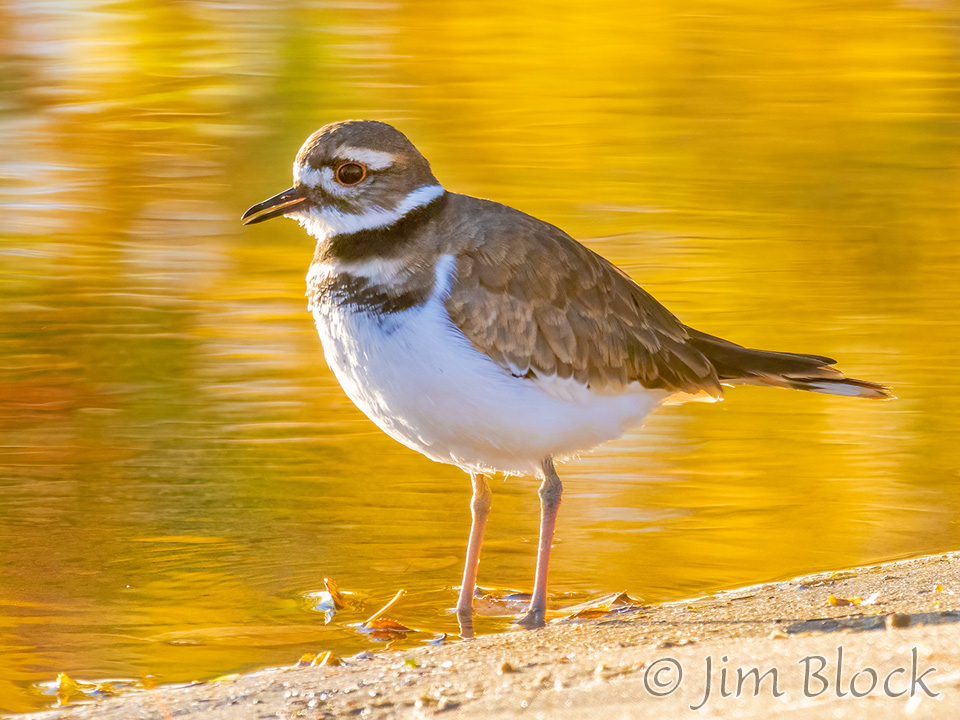

Eastern Phoebe
I photographed an Eastern Phoebe on a rusty post in the Lower Shaker WMA.

Blue Jays
Blue Jays in our Etna yard were especially colorful with the fall foliage. Blue and orange are complimentary colors. They are on opposite sides of the color wheel so they often are dramatic and “pop” in photos when they appear together.


A few other birds
Along the rail trail in Lebanon I found a Baltimore Oriole. They sometimes nest in this area near Lake Mascoma in the spring and summer.

There was a Hermit Thrush near Mill Pond in Etna.

In our yard I photographed a Mourning Dove with a colorful background.

Along King Road in Etna I saw a group of European Starlings. I quickly photographed one out my car window.

This fall I spent considerable time photographing the foliage. I think it was a great season. I will publish a blog of some of my photos in a few weeks. If you want to be automatically notified of this and all new blogs posts, you can subscribe.


